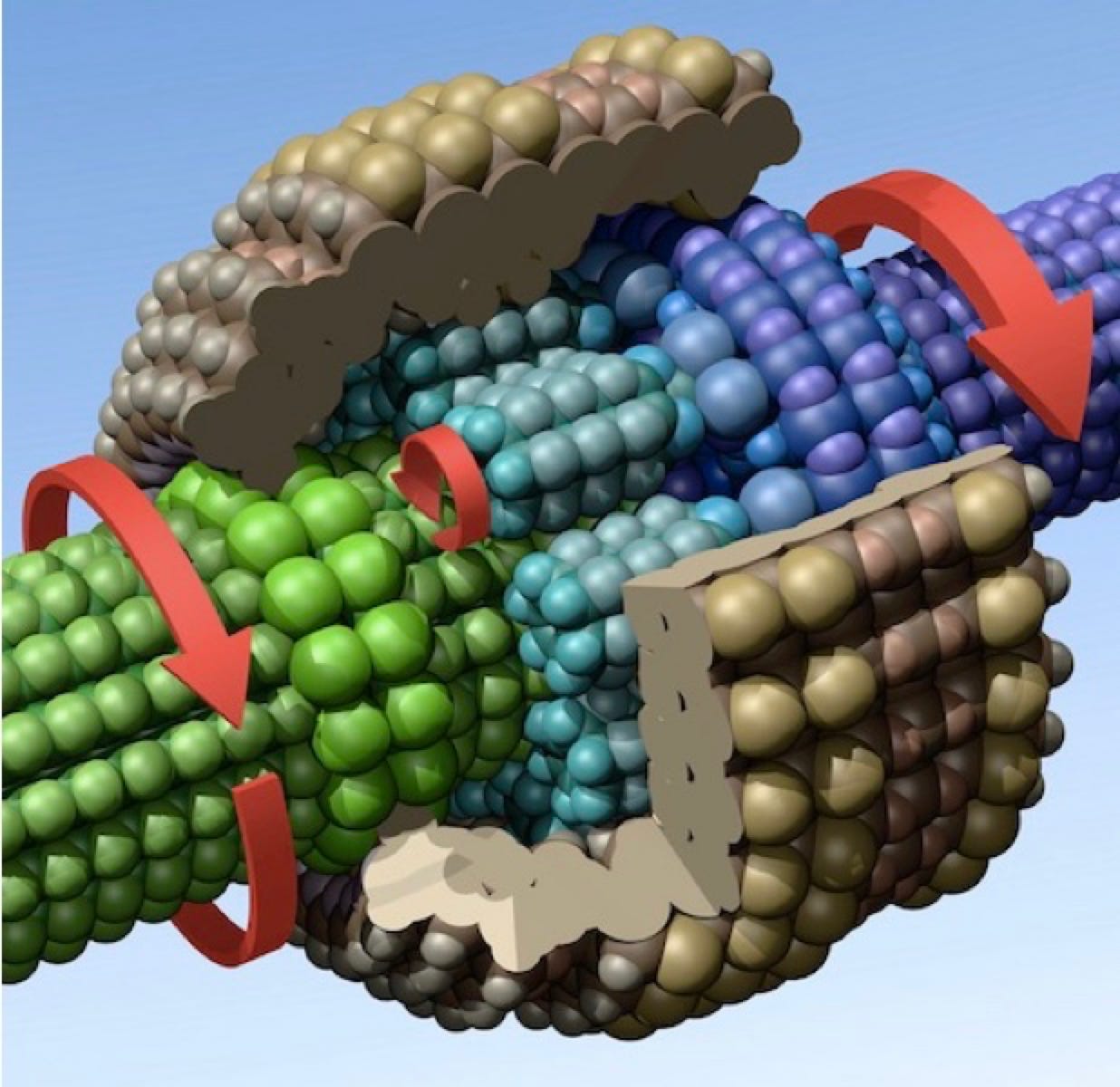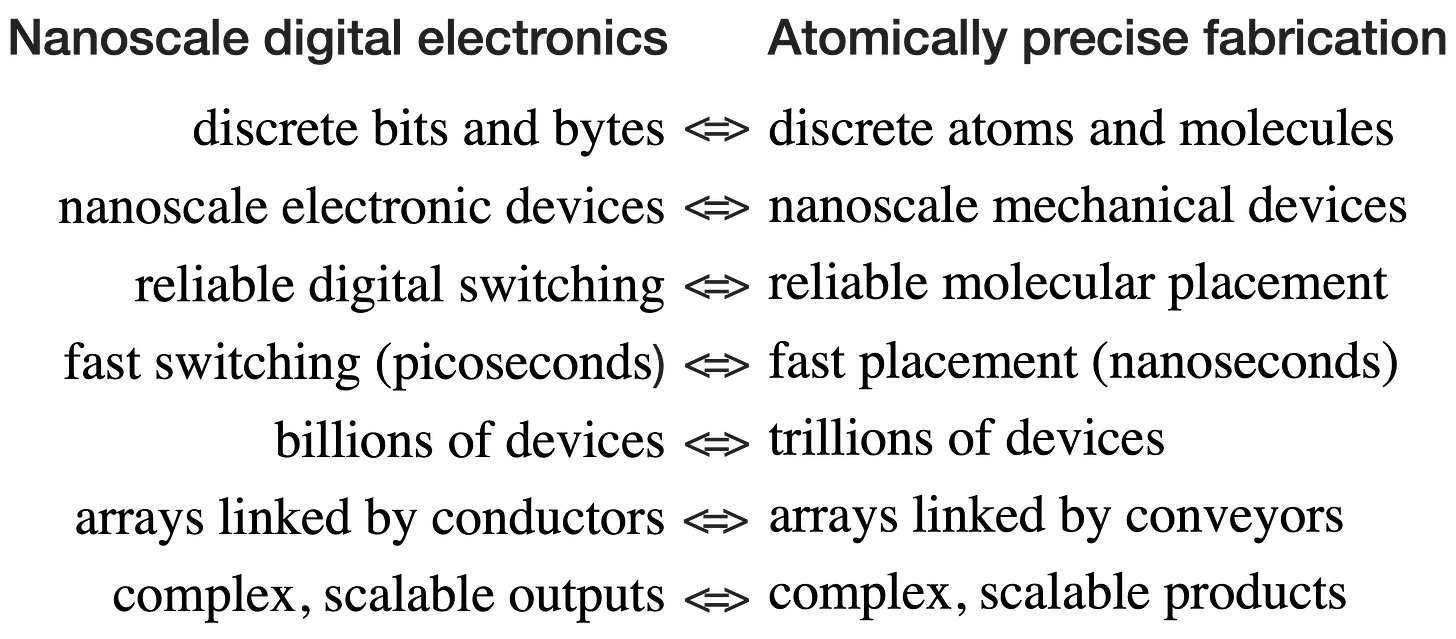AI has unblocked progress toward generative nanotechnologies
Deep learning has enabled breakthroughs in protein engineering, opening a path to developing molecular machinery for transformative, generative nanotechnologies.
Please note:
For present purposes, the prospects I outline in this article can largely be set aside. What matters to the rest of this project is updating perceived policy options to better align with reality, yet transformative implications of other AI-enabled physical capabilities are well-enough aligned with reality to do most of the work (for most purposes). Think of this article as an important heads-up, not a key argument (for now).
To understand the present situation calls for some history:
In the 1990s, “nanotechnology” meant a transformative technology that would enable scalable, atomically-precise mass fabrication (APMF) — a generative nanotechnology — and with it, a host of novel capabilities. “Nanotechnology” became far less interesting when the term got hijacked to fund research into nanomaterials and other inert products of conventional processing technologies. Meanwhile, widespread perceptions of generative nanotechnologies decayed into confusion and science fiction.
Protein engineering
Most people forgot the anticipated development path:
1981: “Development of the ability to design protein molecules will open a path to the fabrication of devices to complex atomic specifications… This path will involve construction of molecular machinery able to position reactive groups to atomic precision.”1
Protein design proved to be possible, yet remarkably difficult. Now, with the advent of AlphaFold and diffusion generative models for protein design, this long-standing obstacle has melted away:
2024: “Deep learning methods have revolutionized protein structure prediction and design”2
After 40 years of disappointing progress, the long-anticipated path to advanced, generative nanotechnologies has been unblocked. It’s time to take a fresh look at where that path leads. The essential concepts are nanoscale machinery, molecular placement, and scalable atomically precise fabrication.
A digital revolution transposed to the material world
Nanoscale digital electronics have transformed how we process information, but nanoscale molecular machinery — a second digital revolution —will transform how we make things in the material world.
There are deep parallels between nanoscale digital electronics and mechanically-guided atomically precise fabrication:
This second, physical digital revolution will enable:
Atomically-precise fabrication, because reactive molecules brought together with ~0.1 nm precision can combine to make precisely bonded components, and these can in turn be combined to make larger components';3
Scalable products, because arrays of nanoscale devices can work in tandem with larger devices to produce objects ranging in size from microns to meters, and from nanograms to tons;
High-throughput processing, because machine productivity scales with process-cycle frequencies, which scale inversely with linear dimensions;
Wide-ranging applications, because new products and materials will expand capabilities in domains that span medicine, spaceflight, carbon capture, computation, and more:
— In medicine, nanoscale machinery can enable precisely targeted therapeutic interventions at the cellular level.
— In spaceflight, improved materials and production methods can reduce vehicle masses and costs by an order of magnitude or more.
— In carbon capture, scaling renewable energy and carbon-capture systems can enable atmospheric normalization on a decade time scale.
— In computation, products of atomically-precise 3D manufacturing can greatly outperform products of semiconductor lithography.
The physical principles of APMF are straightforward, but the chain of required developments remains long — from protein systems engineering, through several additional generations of materials and devices. Design will again be the bottleneck, and AI will again set the pace.
But how much do these prospects really matter?
This writing project argues that AI prospects have opened risk-reducing paths to attractive global outcomes. The key concept is expanding “general implementation capacity”, the ability of humans to achieve broad goals by helping us to design, develop, deploy, apply, and adapt complex sociotechnical systems at scale.
Advanced generative nanotechnologies will expand aspects of general implementation capacity, yet relatively mundane AI-driven prospects — advances in robotics, production capacity, and research automation — all point in the same general direction, with broadly similar implications. AI is pivotal; physical technologies are secondary.
From this perspective, prospects for advanced generative nanotechnologies are less important than they might seem. I could say much more, but think of this article as a heads-up, not headline news.
For a deeper yet broadly accessible discussion of key concepts, principles, applications, and history in this area, see Radical Abundance (Public Affairs, 2013).
For a physics-based analysis (molecular structure, thermal fluctuations, nanomechanical components, system architectures…), see Nanosystems: Molecular Machinery, Manufacturing, and Computation (John Wiley & Sons, 1992) [pdf], which grew out of my MIT dissertation.
For a review of this analysis by the US National Research Council, see “Technical Feasibility of Site-Specific Chemistry for Large-Scale Manufacturing” in A Matter of Size: Triennial Review of the National Nanotechnology Initiative (National Academies Press, 2006). Note that the committee’s favorable recommendations ran counter to US federal-level science politics at the time.
Drexler, K. Eric. “Molecular engineering: An approach to the development of general capabilities for molecular manipulation.” Proceedings of the National Academy of Sciences (1981).
Krishna, Rohith, et al. “Generalized biomolecular modeling and design with RoseTTAFold All-Atom.” Science (2024).
Please keep in mind that building atomically precise structures doesn’t require picking and placing individual atoms. That’s not how chemistry works. Instead, atomically precise products can be constructed by mechanically guided chemistry, in which bonding is choreographed and made reliable by constraining the motions of bound reactive molecules. Molecular dynamics code can easily model the required nanoscale machinery.
This distinction is important. A generation ago, fantasies about machines using tiny fingers to manipulate individual atoms spawned a pointless, toxic controversy about future technological capabilities. Let’s not go there again.





